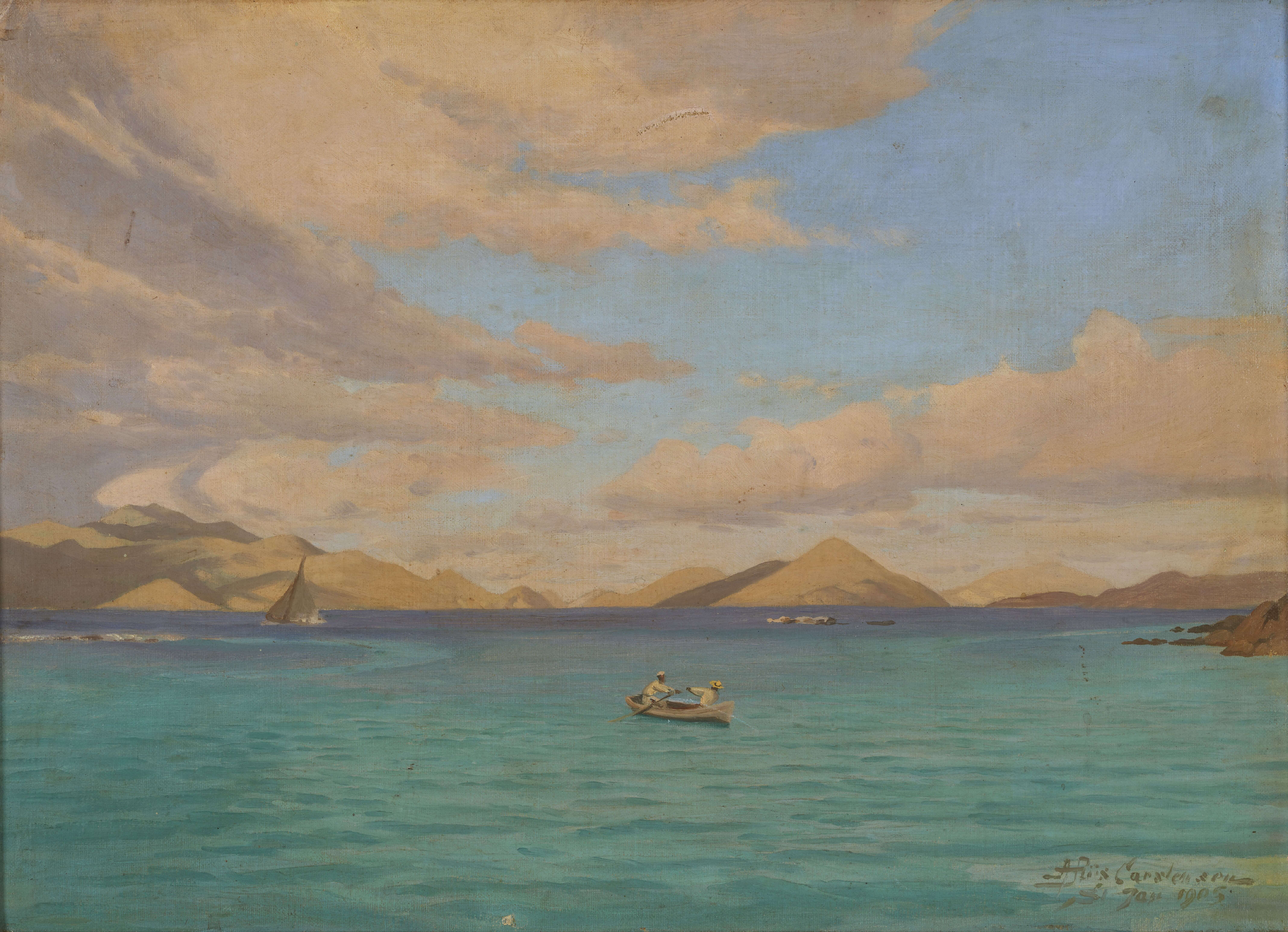New Publication: Together in a Small Boat

This painting of St. John’s coastline as seen from the sea suggests how African Caribbean people navigated small boats between the islands of the Lesser Antilles. The painting is from 1905 by the Danish artist A. Riis Carstensen, yet it may help us imagine the small boat infrastructure that connected islands in the eastern Caribbean in the eighteenth century (courtesy of the Maritime Museum of Denmark).
IN THE SAME SEAs PI Gunvor Simonsen and PhD fellow Rasmus Christensen have just published the article “Together in a Small Boat: Slavery’s Fugitives in the Lesser Antilles,” in William and Mary Quarterly, 3d ser., 80, no. 4, October 2023.
Histories of maritime marronage in the Lesser Antilles—the Danish, Dutch, English, French, and Swedish islands in the eastern Caribbean—have often centered on young enslaved men escaping alone aboard intercontinental vessels anchored in the region’s port towns. Scholars have paid less attention to the enslaved men, women, and children who escaped their enslavers on one of the many small open boats that were decisive for sustaining life in the region. The ubiquity of small-boat infrastructure in the Lesser Antilles, the complex legal regime put in place to regulate it, and the affordances—that is, the possibilities of action—provided by small watercraft demonstrate the importance of small-boat flight to slavery’s fugitives in the Lesser Antilles. Enslaved people—rural and urban, young and old—knew that they had to collaborate to realize the fugitive force of canoes and other small boats scattered along island shorelines. Indeed, maritime marronage was more often carried out in groups than alone. Through time and political turbulence, the small boat allowed enslaved people to pursue dreams of freedom that had an archipelagic character: proximity facilitated knowledge of conditions on nearby islands and sustained or reestablished friendship and family ties.
You can access the article at MUSE project or in a draft version here.
